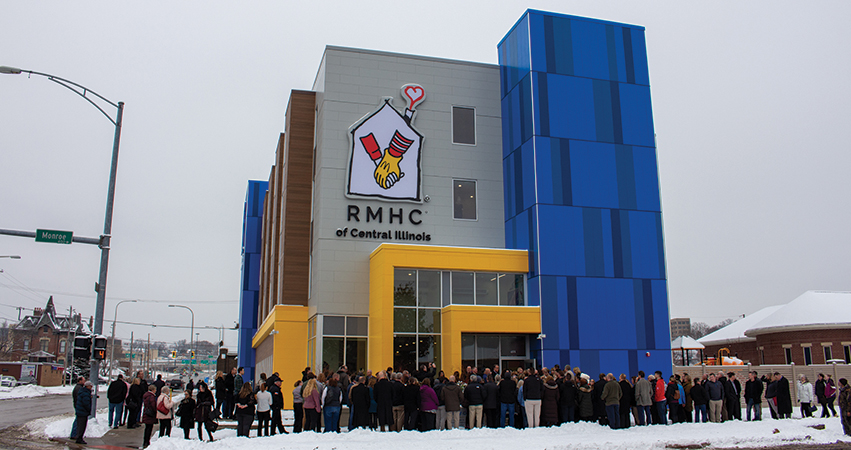
Just over two years ago, it happened: According to the Bureau of Labor Statistics (BLS), in the fourth quarter of 2017 the number of healthcare jobs in the United States surpassed the number of manufacturing and retail jobs for the first time. That was not surprising, given the country’s aging population and the explosion of specialty care. Healthcare is now the nation’s number-one employer, and this boom in healthcare jobs, both clinical and administrative, will not be slowing anytime soon.
In September, BLS released a report indicating that employment in healthcare occupations would grow 14 percent nationwide between 2018 and 2028—much faster than any other occupation. The result will be 1.9 million new jobs, and our region will certainly benefit from this growth.
Growth In Jobs & Wages
It is no shock that healthcare is now a cornerstone of Greater Peoria’s economy. Like the rest of the nation, our region has seen a surge in healthcare employment. BLS data shows that in 1990 there were 24,311 “education and healthcare jobs” in Greater Peoria, representing 17.2 percent of all jobs in the area at the time. Almost 30 years later, BLS reports in 2019 shows 32,356 jobs in these categories—a whopping 33% increase. Those occupations now make up 21.6 percent of the total workforce. (At the regional level, BLS does not separate education and healthcare jobs, but it is safe to assume that the majority of the job growth is healthcare-related.)
Perhaps even more impressive than the growth in jobs is the growth in wages. Over that same time period (1990 to 2019), BLS reports that the average annual pay in those occupations increased from $14,901 to $57,000—a 282% increase in wages. (Trust me, we checked to make sure we were not looking at the wrong data.)
One reason for this dramatic increase might be the continued professionalization and specialization in the healthcare field. The U.S. Department of Education tracks “program completions” within educational institutions, which includes degrees, certificates and other credentials earned. In 2003, there were only 401 such program completions in “health professions and related professions.” By 2018 that number jumped to 1,471. So, just as important as the employers in this field are the colleges and universities that train our citizens to take those jobs. Even our high schools are getting in on the act, with many of our local school districts graduating students with a diploma in one hand and a CNA license in the other.
A Healthcare Powerhouse
We have a lot to be excited about in Greater Peoria. Every region our size has a hospital, and healthcare is important to their economies. But we have eight hospitals in our region. It’s easy to remember OSF Saint Francis and our three UnityPoint facilities, but we also have Mason District Hospital (Havana), Hopedale Medical Complex (Hopedale), Advocate Hospital (Eureka) and Abraham Lincoln Memorial Hospital (Lincoln).
We have the headquarters of OSF HealthCare—a growing system of 13 hospitals making huge investments in downtown Peoria, as well as developing the most comprehensive cancer treatment center in downstate Illinois. UnityPoint and its partners are launching UnityPlace to transform behavioral health in our community. Companies like Advanced Medical Transport and Comprehensive Prosthetics and Orthotics are headquartered here, but have operations across the Midwest. And there are few places in the country where an individual can go from kindergarten to medical school without ever leaving the community.
Finally, we cannot forget that all of this medical firepower also has its impact on the startup world. Two current companies are garnering a great deal of attention. VirtuSense (virtusensetech.com) is developing anti-fall technology that is revolutionizing how hospitals and nursing homes protect their patients. Enduvo (enduvo.com), originally an augmented/virtual reality training platform for medical procedures, is now applying that platform across multiple industries. They were recently awarded a $1.2 million contract from the Air Force to deploy their technology to improve mission readiness.
While Greater Peoria still needs strong manufacturing and agricultural businesses, our healthcare industry has moved beyond the retail provision of medical services. We can now boast first-class medical institutions, companies and educational facilities that both serve our citizens and attract others. As a community, we need to celebrate and support this growth. PM
- Log in to post comments

